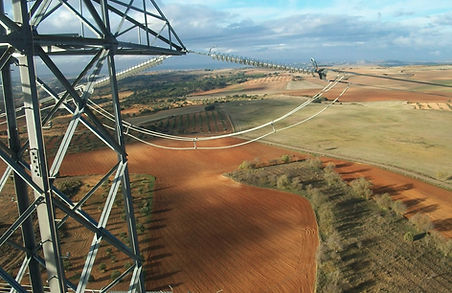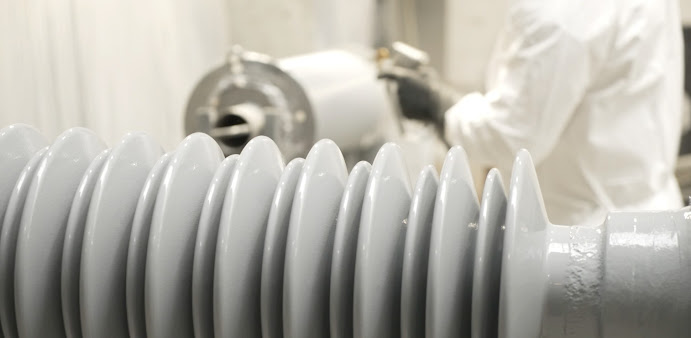Maximizing Electrical Safety: What Are the Roles of RTV Silicone and High Voltage Coating?
Electrical safety is critical in a variety of applications, particularly in high-voltage environments that install electrical Insulators. RTV (Room-Temperature Vulcanizing) silicone and high-voltage coating contribute significantly to electrical safety by providing insulation, protection, and sealing against environmental factors. Here, we will discuss what exactly RTV silicone and HV coating are and how they can ensure electrical safety.
What is RTV Silicone?
RTV silicone is a liquid silicone compound that cures to form a flexible rubber at room temperature. An adhesive sealant, molding rubber, or electronic encapsulant potting compound can be used. RTV stands for Room Temperature Vulcanizing. Industrial applications for RTV silicones include aviation, aerospace, consumer electronics, and microelectronics. Cockpit instruments, engine electronics potting, and engine gaskets are examples of aviation and aerospace product applications. RTV silicones are used because they can withstand mechanical and thermal stress.
What Is the Use of RTV Silicone Coating?
Room-temperature vulcanized (RTV) silicone rubber coatings have gained popularity for HV insulators in polluted environments. These coatings offer good dielectric properties, flexibility, resistance to UV, chemicals, thermal degradation, and corona discharges, prevent rust on electrical towers, and have expanded their application from primary substations to overhead lines. Their key performance characteristics are essential for maintaining HV insulators.
The low surface energy of RTV silicone prevents wetting of the insulator surface under clean service conditions, and water remains in the form of isolated droplets. On polluted surfaces, low-molecular-weight silicone fluid, which diffuses from the bulk of the coating, forms a monolayer around contaminants, giving them a non-wetting property. Furthermore, this monolayer prevents the contaminant from dissolving in water. As a result, the electrolytic layer that forms is weak, preventing large leakage currents from causing flashover.
What Are the Key Aspects of RTV Coatings?
Formulation
RTV coating systems consist of polydimethylsiloxane (PDMS) polymer, reinforcing filler, alumina trihydrate (ATH), coloring pigments, and a cross-linking agent. They are dispersed in a solvent, allowing RTV rubber to transfer to the insulator surface. The coating's electrical and physical properties vary based on the polymer, fillers, cross-linking, and free fluid. Key properties include adhesion to porcelain, water repellency, and leakage current resistance.
Current Leakage Suppression
Studies on RTV coatings' ability to suppress leakage current show hydrophobicity loss in salt-fog chamber and rotating wheel tests. To prevent tracking and erosion, a filler like ATH is added during compounding, causing dry band arcing and reducing the coating's ability to suppress leakage current.
Adhesion
The initial application of RTV coatings to porcelain insulators in a seacoast environment highlighted the importance of adhesion. The salt-laden wind caused erosion, cutting, and lifting, leading to coating failure. Successful application in desert environments also requires good adhesion to porcelain or glass insulators.
What Is High-Voltage Insulation Coating?
Engineers have long been combating pollution's impact on insulators, particularly for high-voltage electrical transmission. Glass and porcelain insulators offer a long-term solution for OHL insulation. To maintain reliability, engineers must either perform High Voltage Insulator Cleaning regularly or implement pollution control measures like water washing or silicone grease application.
However, silicone RTV high Voltage Insulator Coatings (HVIC) offer a superior alternative to these methods. Introduced in the mid-1980s, HVIC products offer improved adhesion and superior electrical properties, including enhanced hydrophobicity, faster recovery after water immersion, and greater leakage current suppression, thus reducing flashover. This innovative approach has significantly improved the reliability of transmission systems and substations.
How does RTV Silicone HVIC work?
An RTV coating for high-voltage insulators prevents leakage current from forming, which can lead to power outages and equipment damage. The coating contains a small chain of low-molecular-weight silicone polymers called "cyclic" with high dielectric strength and low surface-free energy. These cyclics diffuse naturally to the coating surface, stopping migration when covered in a one-molecule-thick layer.
Conclusion
In summary, the combination of high-voltage and RTV silicone electrical Insulator coatings can improve electrical safety in both low- and high-voltage applications by providing effective insulation, sealing, and protection against various environmental factors. These materials are especially important in industries requiring electrical safety, such as power generation, transmission, and distribution.
Are you looking for the perfect insulation solution for your electrical system? Based in Vienna, Austria, Midsun IKM, a division of Midsun Group Inc., is a leading international business development company for RTV insulator coatings and wildlife outage protective covers.


Comments
Post a Comment